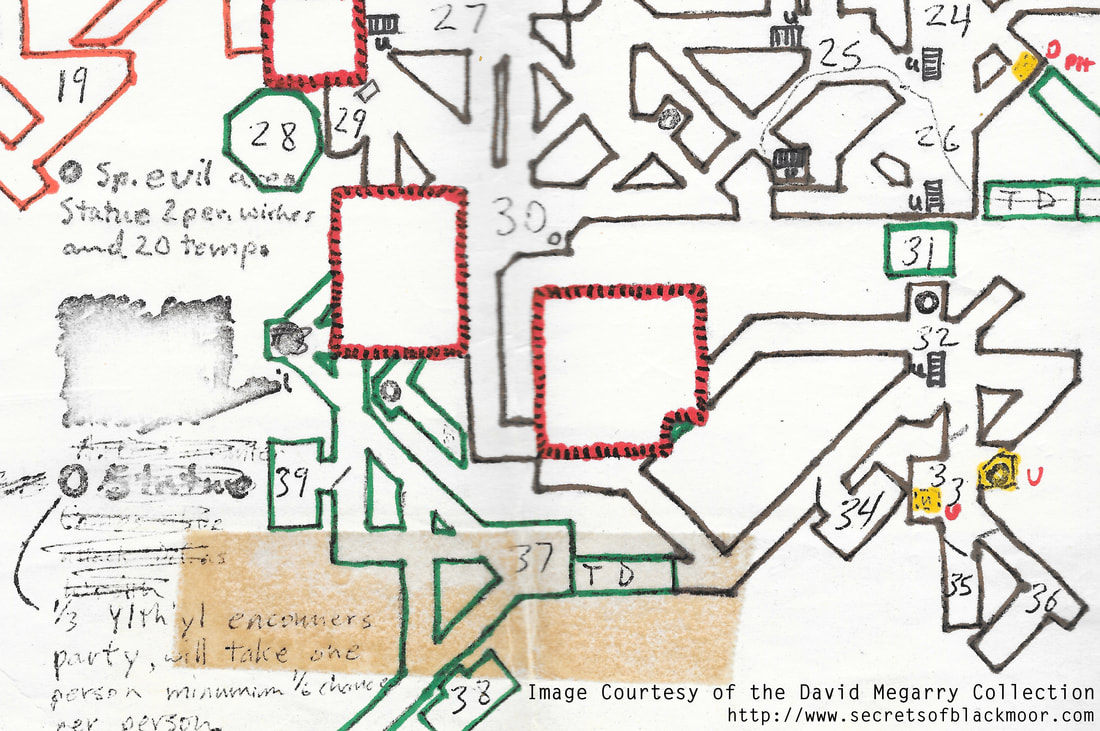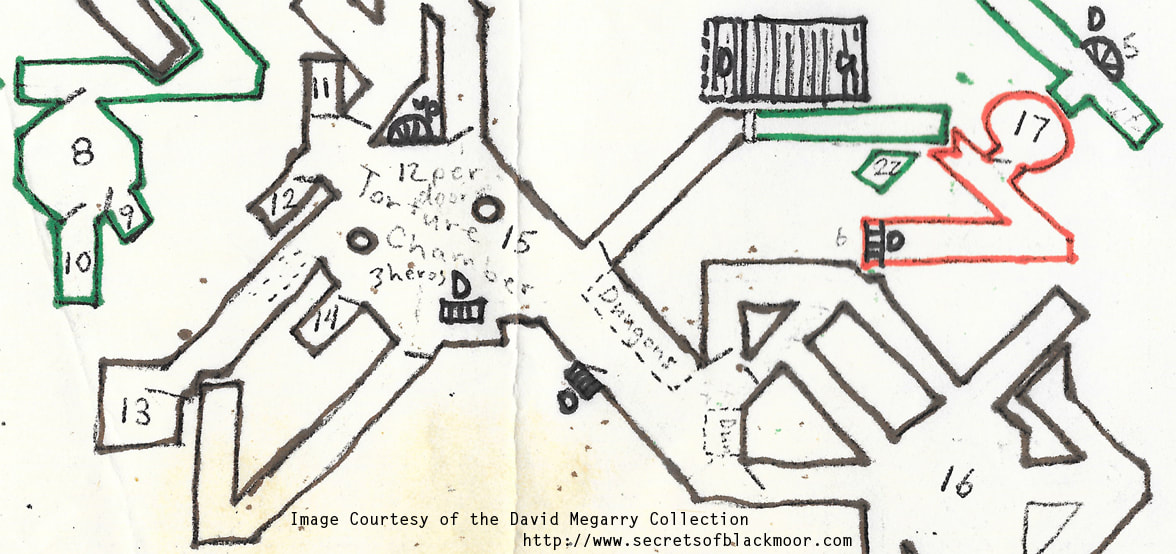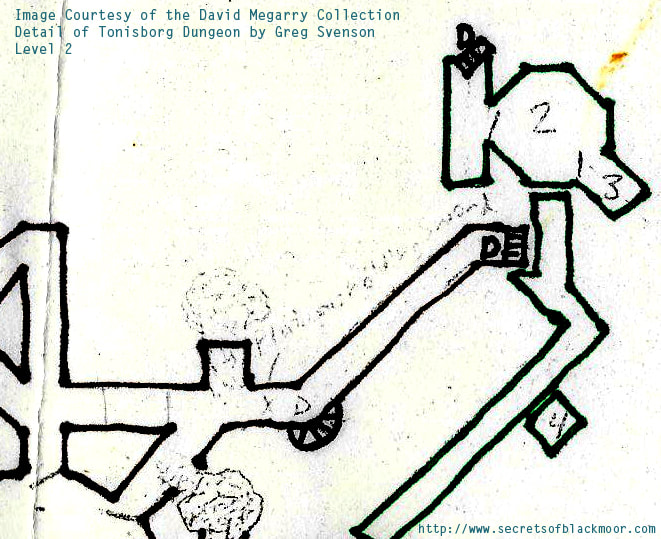|
In our last discussion we talked about the change in how people view Character Death as you trace a parallel path between the evolution of D&D and computer games. Today we're going to look at old gamer culture and see if they had a different way of thinking about things back then. Ok, so let's just start off by telling you this -- It's your job as a referee to kill a lot of characters! We'll go with Gary Gygax's assertion that a 50% mortality rate on every adventure is too high. Yet there must be attrition or the stakes are too low. How about if we get an average of 25%? That seems reasonable. So what was the attitude toward killing off characters back then? We're pretty sure the first DM's made their games really hard on players. It wasn't enough just to be average, or good enough. Players had to be really creative in order to "WIN"; and by winning, we mean that they were able to overcome a monster thus getting its treasure. The first Dungeon's are Blackmoor (1971), Greyhawk (1973), and as far as we can tell, Tonisborg is right in there as well (1973/1974). Blackmoor and Greyhawk predate the publication of any rules, so as play-test games they are going to be a bit different. Tonisborg arose, or rather -- got dug, when D&D drafts were given to the players in the Twin Cities in the summer of 1973. It then goes on to be altered again when the rules are published. Greg Svenson told us he threw away his play-test draft once he got the published rules. It's important to get a feel for how people think during this early stage in RPG's. As DM's today, we know all about how a dungeon should be made. We live within a culture of modern gaming where game play and dungeon design are common shared knowledge. It wasn't like this back then at all. Consider that what is contained in the rules for OD&D is sketchy at best, and that until Dave Arneson publishes the first Adventure Module: The Temple of the Frog via the Blackmoor OD&D Supplement II -- there are no good examples of dungeons for people to copy. Everyone is on their own as they try to figure out the best way to make their dungeon. You may also want to consider that gaming culture changes dramatically from the early days. We've interviewed a lot of early RPG'ers who started before 1974 and they describe things a lot differently; the DM's had no qualms about exterminating characters. In our interview with David Wesely about his first trip to Blackmoor, he relates the game in great detail. We are even able to corroborate this story with Ross Maker's account of the same adventure. They go into the dungeon with a troop of dwarf hirelings in search of a princess who had been kidnapped by a Balrog. At some point one of the dwarves at the back of the party gets separated and disappears. The rest of the party eventually finds the Balrog, or he finds them; it's always a matter of perspective. It's at this point that things get dicey and the Balrog proceeds to decimate the party, beginning with the dwarves. The Balrog then turns his attention to the Players. Just as Wesely and Maker are about to receive the killing blow from the Balrog, the lost dwarf reappears, comes up behind the Balrog, and clobbers him with one mighty blow. Our hapless adventurers both shout, Hooray, were saved! End of story. Well, not really. Wesely says that although he had fun, he also gave Dave Arneson a hard time about the adventure, because he felt that Dave was being too easy on the players; that the rescue of the players by the lost dwarf is making the Deus Ex Machina too obvious. Wesely's advice to Arneson is that he needs to allow his players to get killed in order to make the stakes higher and the game worth playing. Arneson takes this advice to heart, from that point on Dave Arneson becomes a KILLER DM. We know this because Arneson was known for running games at conventions where he would wipe out entire parties without blinking eye. When asked about this high mortality rate, Arneson would mimic killing players characters by smashing his thumb into the table and grinding it back and forth. This ruthlessness as a DM even comes up when he goes to demonstrate Blackmoor to the Lake Geneva Gamers in 1972. In that adventure Terry Kuntz earned a singular honor. While down in the dungeon, their small party of players: Gary Gygax, Ernie Gygax, Rob Kuntz, Terry Kuntz, and David Megarry, ran into a wizard. Everyone else decided to run away. Terry figured he could take him on and drew his sword. Well, things didn't last long. The wizard drew his wand and blasted him with a fireball, frying him instantly. As the first character to die in Lake Geneva, Terry can now claim to be Arneson's first kill outside of Minnesota. The KILLER DM attitude is pervasive in the Twin Cities. We asked Dave Belfry about his adventures in Blackmoor fully expecting to find out about an epic high level character with years of history and the countles stories that go with that. Yet his response surprised us entirely, since he said something along these lines - I never had a character that lasted long. As well as - I died a lot of times. Martin Noetzel is most famous as the Wandering Elf, he related the same thing -- I died a lot of times. We can take these examples of early gamer culture even farther if you listen to the type of language the original gamers use. Rob Kuntz says a very interesting word when he talks about playing with Arneson "I loved playing AGAINST Arneson…" Chirine Ba Kal uses the same language when he talks about playing. He describes a game as playing AGAINST the DM. We can hear the proverbial screeching tires as everyone who reads this is confronted by this old concept of playing against who ever is referee'ing your game. If we relate back to our previous article on how Computer/Video Games change, consider how coin operated consoles give you 3 lives. You can play your heart out and maybe you may last a really long time, yet in the end, the machine wins and you die -- GAME OVER! Of course, some of you are now rolling on the ground while squealing things like "But the DM is supposed to be an impartial judge!" Yeah, whatever, all you N00B gamers need to learn your lesson. When you come to a real dungeon game, recall these words of wisdom that are written on the gates of hell: Abandon all hope - ye who enter here! That's the difference in a nutshell: the original game is about surviving through hell, and new games seem to be like when the bell goes off, and all the children run out of the school and climb all over the super safe plastic playground equipment. Yup, it's fun, but it isn't a challenge if no one gets hurt. And of course you may be wondering how all of this can relate to Greg Svenson and his Tonisborg Dungeon. We're showing you a snippet of the dungeon key from level 1. You may notice that room #2 contains five wraiths.
If you are designing a dungeon, do you populate it with easy to kill monsters and do a lot of hand holding, so that your players are less likely to die? Or do you make things difficult and step on your player's egos a bit? Judging by what we see in Tonisborg's 1st level, Greg too is a KILLER DM. We feel we are building a really strong case for making dungeon games deadly again. What do you think? In our next in this series on dangerous dungeons, we'll drag some of Dan Boggs research into the mix and talk about the actual mechanics involved. If you have any doubts, thus far -- trust us, it's only gonna get uglier.
4 Comments
Lokius
5/11/2018 08:42:04 pm
I think if you are doing a dungeon challenge type game a killer dungeon makes sense as a play style. While I have only been playing since the late 80's there has been a lot less emphasis on character death, at least except for Darksun which had the players roll up 4 characters each as part of the core rules.
Reply
Secrets of Blackmoor
5/11/2018 11:04:25 pm
Good comments - Thanks!
Reply
Leave a Reply. |
DVD'S, Books, T-shirts, games and more available on our store.
AuthorSecrets of Blackmoor is a Feature-length documentary about the birth of the “Mother of all Games;” Dungeons & Dragons. Archives
January 2024
Categories |
Privacy Policy
All Contents Copyright © 2023 The Fellowship of the Thing, Ltd. - All Rights Reserved
All Contents Copyright © 2023 The Fellowship of the Thing, Ltd. - All Rights Reserved





 RSS Feed
RSS Feed